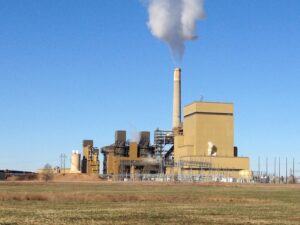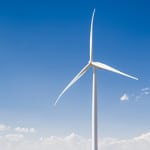A new study from BloombergNEF (BNEF) says developing countries lead the way on new investments in clean energy, with those nations taking advantage of lower project costs for solar and wind power as they move away from fossil fuel-powered generation.
Today’s report, from a survey by BNEF’s annual Climatescope project, says “emerging market nations … accounted for the majorities of new clean energy capacity added and new funds deployed globally in 2017.” BNEF in a November 27 news release said the report shows countries can expand access to energy without increasing greenhouse gas emissions.
“It’s been quite a turnaround. Just a few years ago, some argued that less-developed nations could not, or even should not, expand power generation with zero-carbon sources because these were too expensive,” said Dario Traum, BNEF senior associate and Climatescope project manager. “Today, these countries are leading the charge when it comes to deployment, investment, policy innovation and cost reductions.”
Developing nations added 114 GW of zero-carbon generating capacity of all types, including 94 GW of wind and solar generating capacity alone, both all-time records, according to the report. Those countries also brought online the smallest amount of new coal-fired generating capacity since at least 2006. The report said new coal generating capacity was at 48 GW, down 38% from 2016 and just less than half the level of new coal builds—97 GW—in 2015, the high-water mark for new coal-fired generation.
BNEF earlier this year in its “New Energy Outlook 2018” said half the world’s power will come from wind and solar resources by 2050. That report said coal generation will fall by more than 70% from today’s levels.
Better Economics for Clean Energy Technologies
BNEF said the move toward cleaner generation, in particular solar and wind power, is largely due to improved economics. The cost of renewable energy projects is falling, “thanks to exceptional natural resources in many developing countries and dramatically lower equipment costs.”
The report specifically said new renewables projects are more cost-effective than thermal plants, even without subsidies. It noted that more than 28 GW of generating capacity was contracted through tenders in emerging markets last year, with developers offering wind power for as low as $17.70/MWh, and solar as low as $18.90/MWh.
The Climatescope survey said that as of year-end 2017, 54 developing nations had invested in at least one utility-scale wind farm, and 76 countries secured financing for solar projects of 1.5 MW or larger. That compares to just 20 countries with utility-scale wind projects 10 years ago. A decade ago, there were just three solar projects financed.
The traditional lenders for projects in emerging markets continue to support clean energy, and private investors—including utilities—also are increasing their investments, the report says. At the same time, some investors are moving away from financing fossil fuel-powered projects.
As an example, the European Bank for Reconstruction and Development (EBRD) on November 21 issued a statement saying it no longer will finance coal projects. The statement came after an environmental group reported the EBRD is not considering support for a coal-fired power plant project in Kosovo.
“We have issued a draft Energy Sector Strategy saying that we will not finance coal. This remains a draft and is subject to a final vote and approval by our Board in December,” an EBRD official said in an emailed statement to media.
Ethan Zindler, BNEF’s head of Americas and one of the founders of Climatescope, said, “European players, in particular, have moved aggressively to finance [renewable] projects, particularly in Latin America. While concessional capital is still clearly required in least developed countries or in others just beginning to adopt clean energy, elsewhere private funders appear quite comfortable deploying capital at volume.”
Investments in Clean Power and Project Deployment
The Climatescope 2018 study was underwritten by the UK Department of International Development. The survey this year was expanded to include 100 countries classified by the Organization for Economic Co-operation and Development (OECD) as less developed. BNEF said Mexico, Chile, and Turkey, considered important markets for clean energy, also were added this year.
The Climatescope survey measures how amenable countries are to investment in clean power and project deployment. Chile ranked first in this year’s survey, primarily due to “strong government policies, a demonstrated track record of clean energy investment, and a commitment to de-carbonization despite grid restraints,” according to the report.
The rest of the top 10 includes, in order of rank: India, Jordan, Brazil, Rwanda, the Philippines, China (which held the top spot in 2016), Mexico, Peru, and Thailand.
BNEF said the Climatescope methodology was revamped for 2018 to reflect current market realities. It said market conditions have “shifted dramatically” since the project was launched in 2012, with support from the Inter-American Development Bank Group’s Multilateral Investment Fund. The survey’s current methodology “recognizes that clean energy has achieved such scale that certain countries are now established manufacturing hubs while others are best positioned to benefit as importers of low-cost goods. To reflect that, in a change from prior years, countries in the survey did not receive higher scores for hosting manufacturing chains.”
BNEF said this year’s methodology “is consistent with Climatescope’s mission to highlight the conditions present in countries conducive to add clean energy generating capacity in the short run.” It said that adjustment “resulted in some of the world’s largest nations receiving somewhat lower scores than they might have had the previous methodology, including China.”
Challenges Ahead
The 2018 report highlighted the growth of clean energy in developing nations and also included information about future challenges for the sector. It noted that while new coal-fired capacity dropped significantly, the actual generation from coal plants rose 4% from 2017, to 6.4 TWh. It also noted that 193 GW of coal generation capacity is under construction in developing nations, citing Coalswarm data. It said about 86% of that new capacity is being built in China, India, Indonesia, and South Africa.
The report says that, “In the context of keeping global CO2emissions in check, the longer-term challenge for clean power is not just to beat out new coal-fired power plants for new-build opportunities. Rather, it is to displace existing coal-fired plants, many of which have just recently come online.”
The report says that while China and India are growing their renewable energy generation, each country still receives at least two-thirds of its power from coal. The two countries combined to add 432 GW of coal generation capacity from 2010 through 2017. It noted that by comparison, the U.S. at present has a total of 260 GW of coal generation online. Climatescope said it will be difficult for both China and India to move away from coal due to pressure to keep power affordable and expand access to electricity to more of both countries’ large populations.
The report also says the continued growth of renewable energy resources will require expanded transmission capacity, storage technologies, and demand-response programs.
—Darrell Proctor is a POWER associate editor (@DarrellProctor1, @POWERmagazine).









